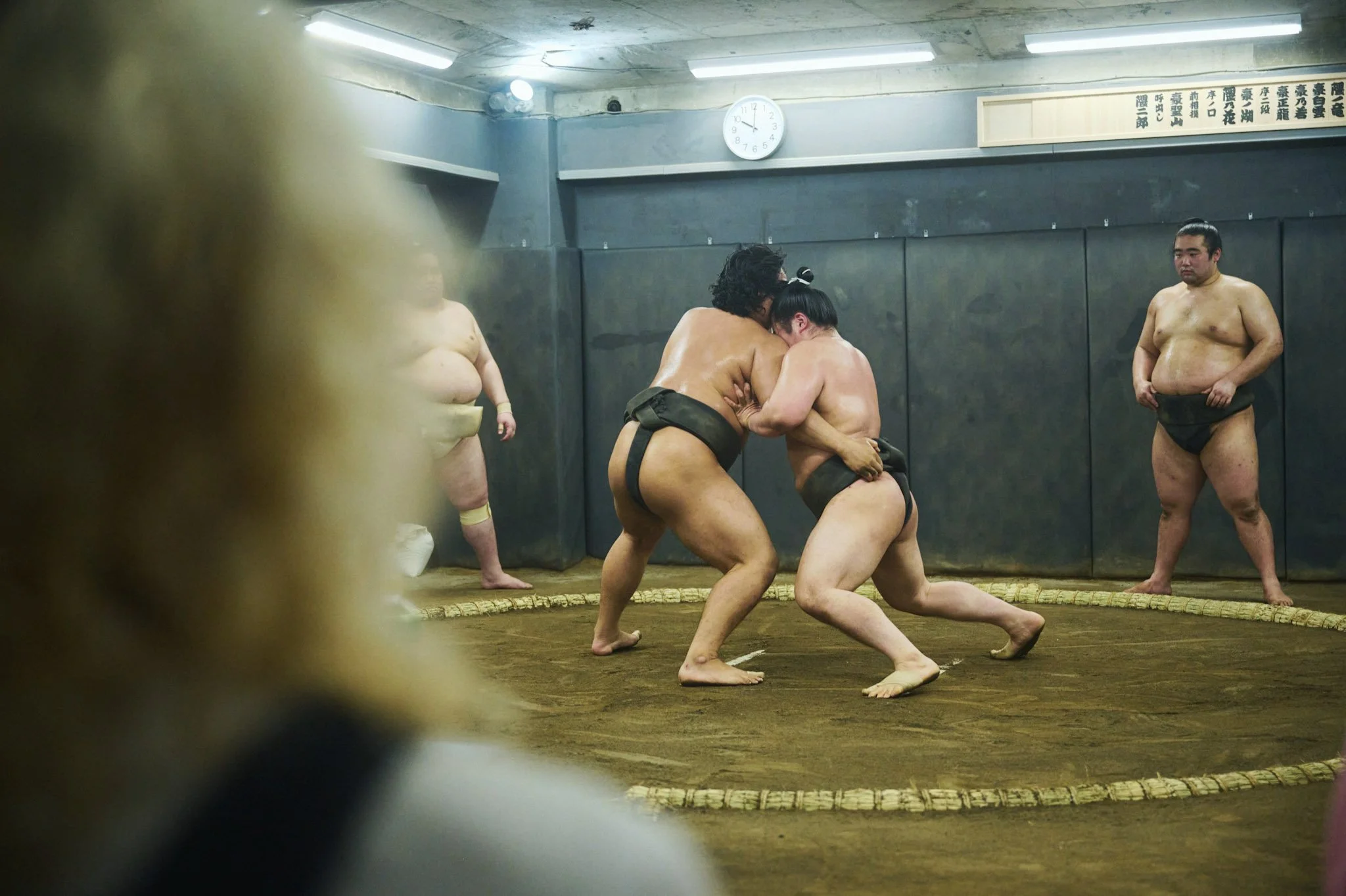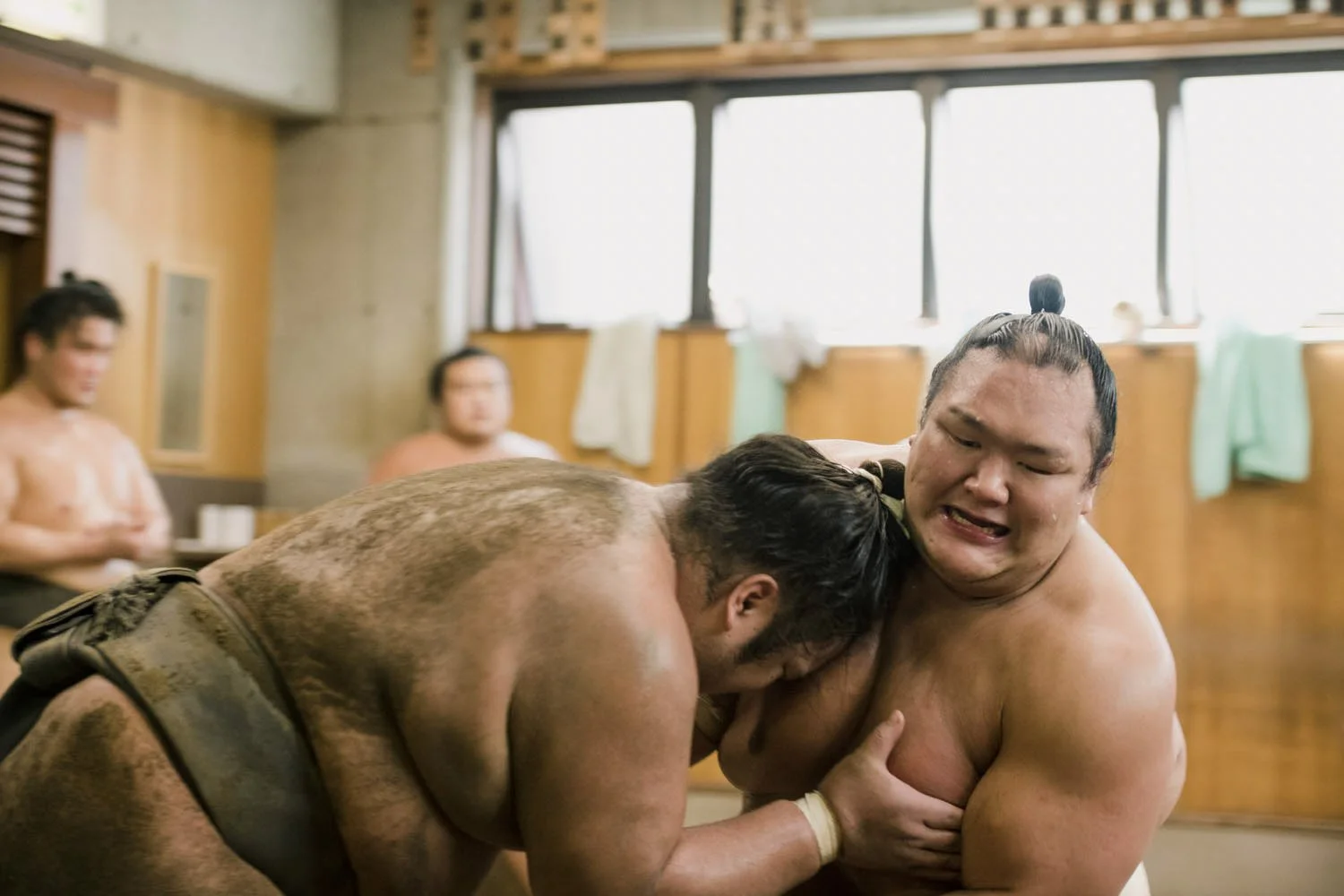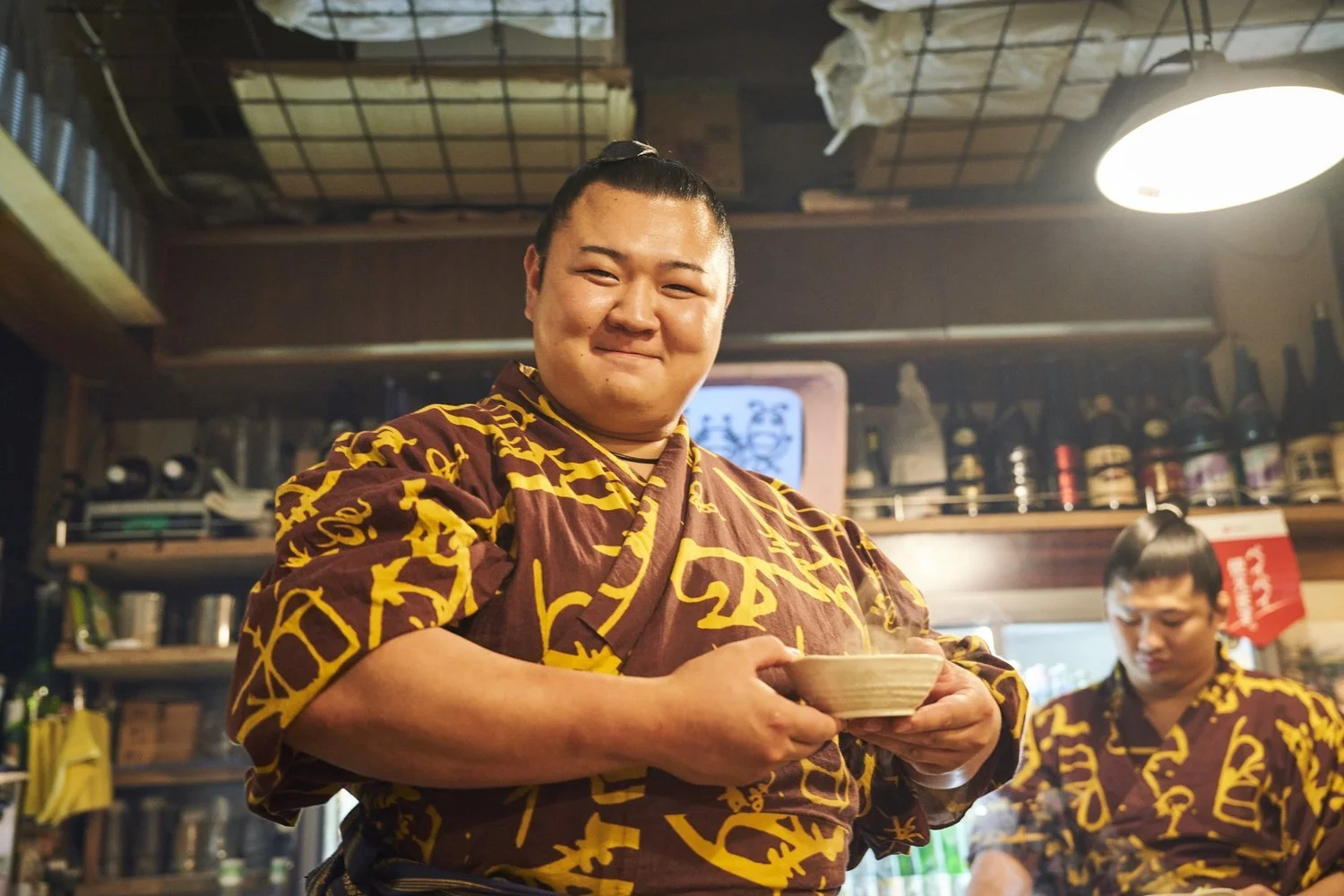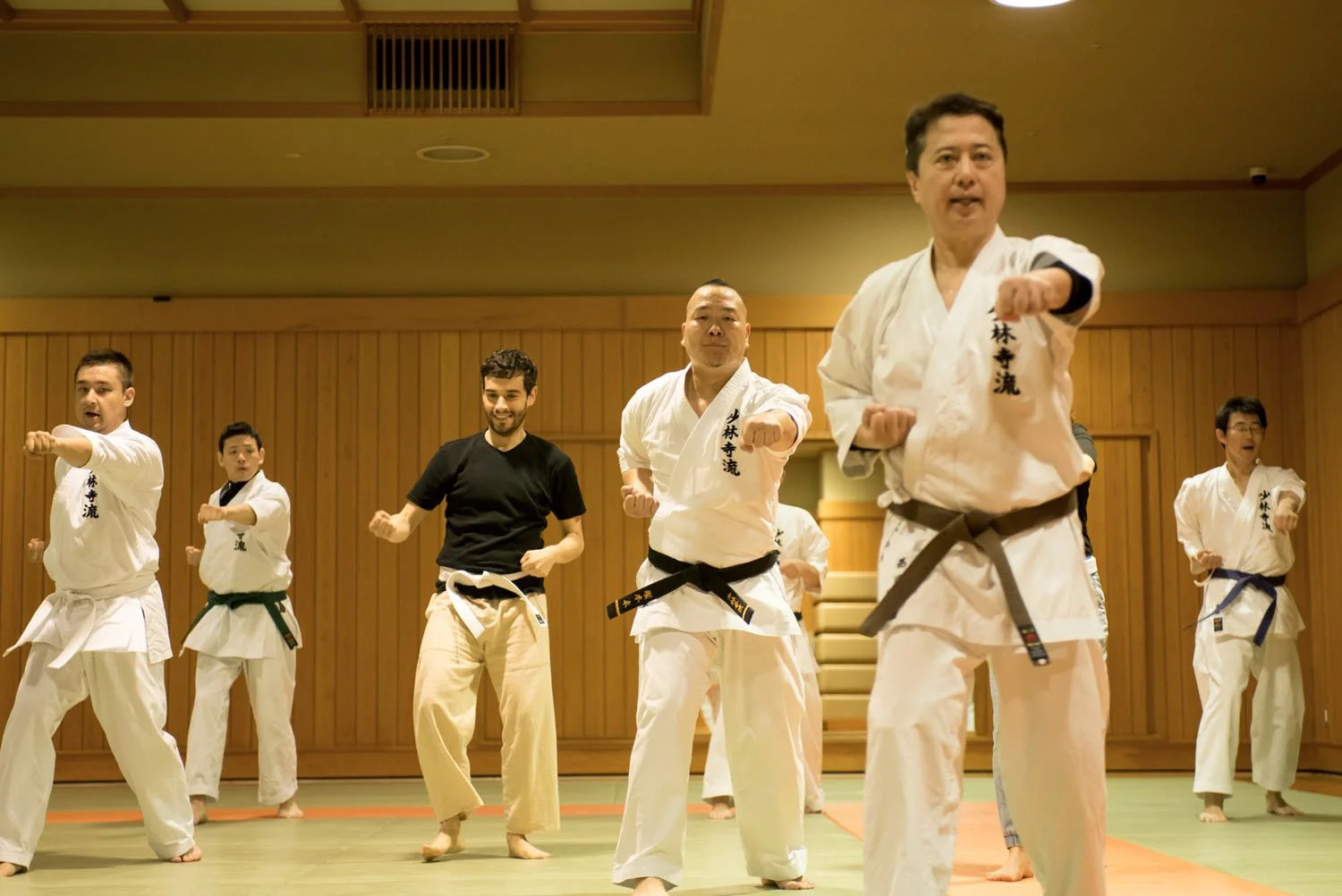
How to Experience Sumo Wrestling at the Sumo Grand Tournament
Learn how to secure tickets to one of the Sumo Grand Tournaments during your next trip to Japan.
In this Guide:
What is the Sumo Grand Tournament?
How to book Sumo Grand Tournament tickets
Sumo Tournament customs and etiquette
Sumo Grand Tournament day-of
Seeing sumo morning training
Sumo wrestling experiences in Japan
Sumo FAQ
In the heart of Japan's ancient sporting tradition stands sumo wrestling - a mesmerizing blend of raw athleticism and sacred ritual. When two wrestlers clash on the dohyo (ring), wearing nothing but their traditional mawashi loincloths, they create a spectacle of power that often ends in mere seconds. Yet behind each explosive bout lies countless hours of rigorous training and centuries of spiritual tradition.
Sumo's roots stretch back over 1,500 years, beginning not as a sport but as a religious ceremony. These early matches were sacred rituals, performed to honor the gods and pray for abundant harvests. It wasn't until Japan's Edo Period that sumo transformed into a spectator sport, drawing enthusiastic crowds from across all social classes to witness these dramatic confrontations.
Today, sumo holds pride of place as Japan's national sport. The path of a sumo wrestler begins remarkably early - many join at just 14 or 15 years old - and these young athletes live in communal sumo stables called a beya, where they share meals, sleeping quarters, and countless hours of training with their fellow wrestlers, all in pursuit of becoming a champion during the sumo Grand Tournaments.
What is the Sumo Grand Tournament?
The National Sumo Association orchestrates six grand tournaments annually, with three hosted in Tokyo and the others rotating between Osaka, Nagoya, and Fukuoka. For many travelers to Japan, witnessing the ancient sport of sumo is a must-see experience. Whether you're planning to attend one of the grand tournaments (honbasho) or exploring alternative options like morning practice sessions, understanding the customs and booking processes will enhance your sumo experience.
How to Book Sumo Grand Tournament Tickets
There are six grand sumo tournaments held annually, each lasting 15 days. These take place in:
January, May, and September in Tokyo
March in Osaka
July in Nagoya
November in Fukuoka
Securing tickets requires advance planning, as these events frequently sell out—and fast, as domestic fans snap up these limited releases quickly.
Official sumo tickets go on sale approximately one month before each tournament through the Japan Sumo Association's website. For visitors to Japan, it’s often most convenient to book through specialized ticket agencies or your hotel's concierge service, as navigating the Japanese booking system can have many challenges.
When buying sumo tournament tickets, there are different options (and prices) to consider. Box seats (masu-seki) accommodate four people and offer traditional Japanese-style floor seating with cushions. Individual chair seats (isu-seki) are also available. Seats are offered a variety of distances from the dohyo ring, with the closest ringside seats to the action often being reserved by sponsors and supporters.
The Sumo Grand Tournament
Sumo Tournament Customs and Etiquette
While there are many sumo customs and etiquette that attendees should keep in mind on the day of the sumo grand tournament, the atmosphere is often more relaxed than what first-time sumo tournament visitors expect. The energy of the crowd is palpable, with fans cheering in unison for particularly triumphant wins; drinking and bringing in your own bento food boxes is also considered a quintessential part of the experience, with box masu-seki seats making sharing snacks and beverages seamless during the matches.
However, sumo tournaments follow strict traditions that visitors should respect when attending the sumo Grand Tournament.
Key etiquette points include:
Never stepping on the cushions when entering or leaving box seats
Remaining seated during bouts to avoid blocking others' views
Refraining from flash photography
Staying quiet during pre-bout ceremonies
Not eating or drinking while the wrestlers perform their entrance ceremonies
Sumo Tournament Daily Schedule
Attending a sumo tournament – whether in Tokyo, Nagoya, Osaka, or Fukuoka – is a full-day affair. Lower-ranked wrestlers compete in the morning, fresh after their morning practice, while elite matches occur in the late afternoon.
As remaining for an entire day of sumo competition can be tiring for the first-time observer (and even for the die-hard sumo fanatics), most travelers arrive in the mid-afternoon. This allows them to watch the top-division (makuuchi) rounds, which normally begin around 4:00 PM.
The line-up for the sumo Grand Tournament and the most up-to-date rankings of the sumo wrestlers are released before the tournament begins, giving attendees ample time to review the players and match-ups before the day of the sumo tournament arrives.
Sumo Wrestling Experiences in Japan
Seeing Sumo Morning Practice
Visiting the sumo Grand Tournament is a thrilling chance, no doubt in part due to the competition’s limited availability and exclusivity. Even countless full-time residents of Japan have yet to secure the opportunity to explore this spiritual form of Japanese martial arts culture.
However, with only three tournaments in Tokyo a year (and others in Fukuoka, Osaka, and Nagoya), its often the case that tournament dates and visitors’ dates of travel don’t align. Even in those cases, don’t write off being able to get up close and personal with this ancient athletic tradition. A number of sumo stables offer visitors the chance to sit ringside at morning sessions held at their training residences, offering a exhilarating glimpse of the sumo wrestlers in action. Every slam, slap, and tackle is just meters away from your eyes.
As these training sessions are not a tourist experience, but authentic practices being conducted by professional athletes, all in a space with intensely spiritual ties, similar to when attending the sumo grand tournament. These morning session rules include:
Arriving around 10 minutes early to practice
Remaining silent for the whole practice
Dressing respectfully
Following the photography policies set by the stable (polices my vary by stable)
Taking off shoes before entering the stable
It is typically considered rude to leave in the middle of morning practice, although some sumo stables might have different regulations. Any guests interested in attending these sumo morning practices should keep in mind the length of the experience, the cushion seating provided by the sumo stable (which can be uncomfortable for guests who might require seating with more stability), and when considering whether or not to bring younger children.
Advance reservation for these sumo morning practices is required and seating is limited. A guide must also accompany visitors to ensure that all attendees are respectful at all times and do not distract the sumo wrestlers from their intense training. To learn more about the rules of sumo wrestling before your visit to a sumo morning practice, click here.
More Japan Sumo Experiences
Get up close and personal with sumo wrestling at a morning training session. Watch these powerful athletes in action from the ringside, gain insight into their rigorous training methods, and cap off the experience with a chance to chat and snap a photo with them after practice ends.
If watching the sumo grand tournament and visiting a morning sumo session aren’t enough to satiate your curiosity, why not dive deeper with unique cultural experiences like:
Chowing down on chanko nabe with the wrestlers after the practice ends
Reserving a fully private sumo morning training session
Joining sumo wrestlers for an izakaya dinner at a location led by a former sumo champion
Sumo FAQs
-
Two wrestlers face off in a circular ring called the dohyo. The match ends when one wrestler forces the other out of the ring or causes any part of their body other than the soles of their feet to touch the ground.
-
Sumo matches are typically very short, often lasting only a few seconds. However, some matches can go longer, depending on the wrestlers' tactics and endurance.
-
Sumo wrestlers wear a traditional loincloth called a mawashi. This garment is essential for the sport, and wrestlers are only allowed to grab the mawashi during matches.
-
No, sumo does not have weight classes. No matter how small and light a rikishi may be, he fights any scheduled opponent, regardless of weight difference.
-
Some common sumo wrestling moves include:
Oshidashi: Pushing the opponent out of the ring
Yorikiri: Grabbing the opponent’s belt and forcing them out
Uwatenage: Throwing the opponent using an overarm grip on their belt
Shitatenage: Throwing the opponent using an underarm grip on their belt







